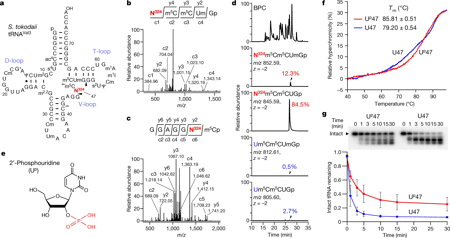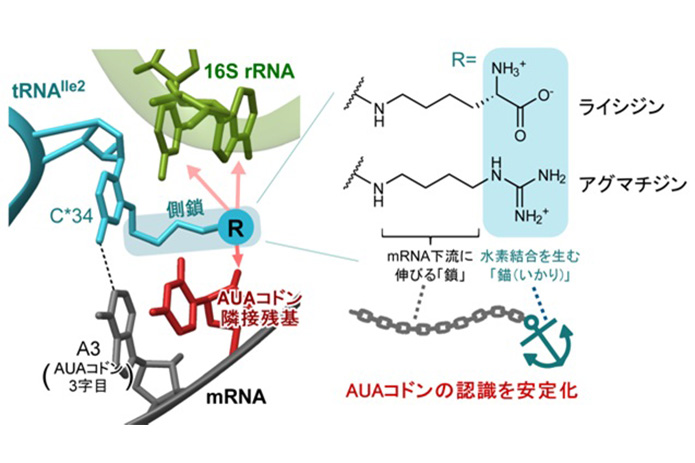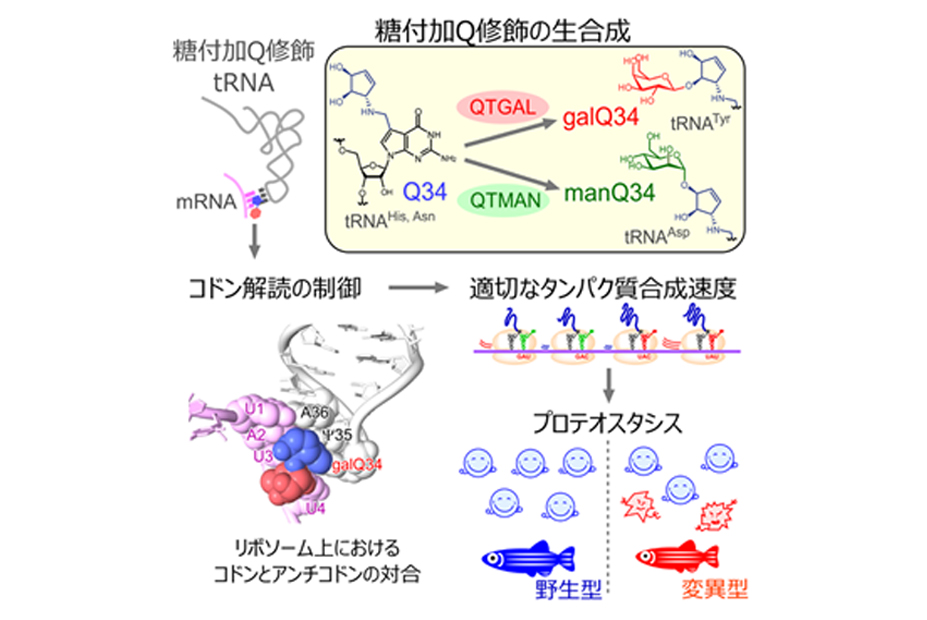Authors
Takayuki Ohira, Keiichi Minowa, Kei Sugiyama, Seisuke Yamashita, Yuriko Sakaguchi, Kenjyo Miyauchi, Ryo Noguchi, Akira Kaneko, Izumi Orita, Toshiaki Fukui, Kozo Tomita & Tsutomu Suzuki
Abstract
Post-transcriptional modifications have critical roles in tRNA stability and function1,2,3,4. In thermophiles, tRNAs are heavily modified to maintain their thermal stability under extreme growth temperatures5,6. Here we identified 2′-phosphouridine (Up) at position 47 of tRNAs from thermophilic archaea. Up47 confers thermal stability and nuclease resistance to tRNAs. Atomic structures of native archaeal tRNA showed a unique metastable core structure stabilized by Up47. The 2′-phosphate of Up47 protrudes from the tRNA core and prevents backbone rotation during thermal denaturation. In addition, we identified the arkI gene, which encodes an archaeal RNA kinase responsible for Up47 formation. Structural studies showed that ArkI has a non-canonical kinase motif surrounded by a positively charged patch for tRNA binding. A knockout strain of arkI grew slowly at high temperatures and exhibited a synthetic growth defect when a second tRNA-modifying enzyme was depleted. We also identified an archaeal homologue of KptA as an eraser that efficiently dephosphorylates Up47 in vitro and in vivo. Taken together, our findings show that Up47 is a reversible RNA modification mediated by ArkI and KptA that fine-tunes the structural rigidity of tRNAs under extreme environmental conditions.
References
1.Suzuki, T. The expanding world of tRNA modifications and their disease relevance. Nat. Rev. Mol. Cell Biol. 22, 375–392 (2021).
2.Wiener, D. & Schwartz, S. The epitranscriptome beyond m6A. Nat. Rev. Genet. 22, 119–131 (2021).
3.Frye, M., Harada, B. T., Behm, M. & He, C. RNA modifications modulate gene expression during development. Science 361, 1346–1349 (2018).
4.Frye, M., Jaffrey, S. R., Pan, T., Rechavi, G. & Suzuki, T. RNA modifications: what have we learned and where are we headed? Nat. Rev. Genet. 17, 365–372 (2016).
5.Hori, H. et al. Transfer RNA modification enzymes from thermophiles and their modified nucleosides in tRNA. Microorganisms 6, 110 (2018).
6.Lorenz, C., Lunse, C. E. & Morl, M. tRNA modifications: impact on structure and thermal adaptation. Biomolecules 7, 35 (2017).
Nature: https://www.nature.com/articles/s41586-022-04677-2
You May Also Like
These Related Stories

Structural insights into the decoding capability of isoleucine tRNAs with lysidine and agmatidine

Glycosylated queuosines in tRNAs optimize translational rate and post-embryonic growth

